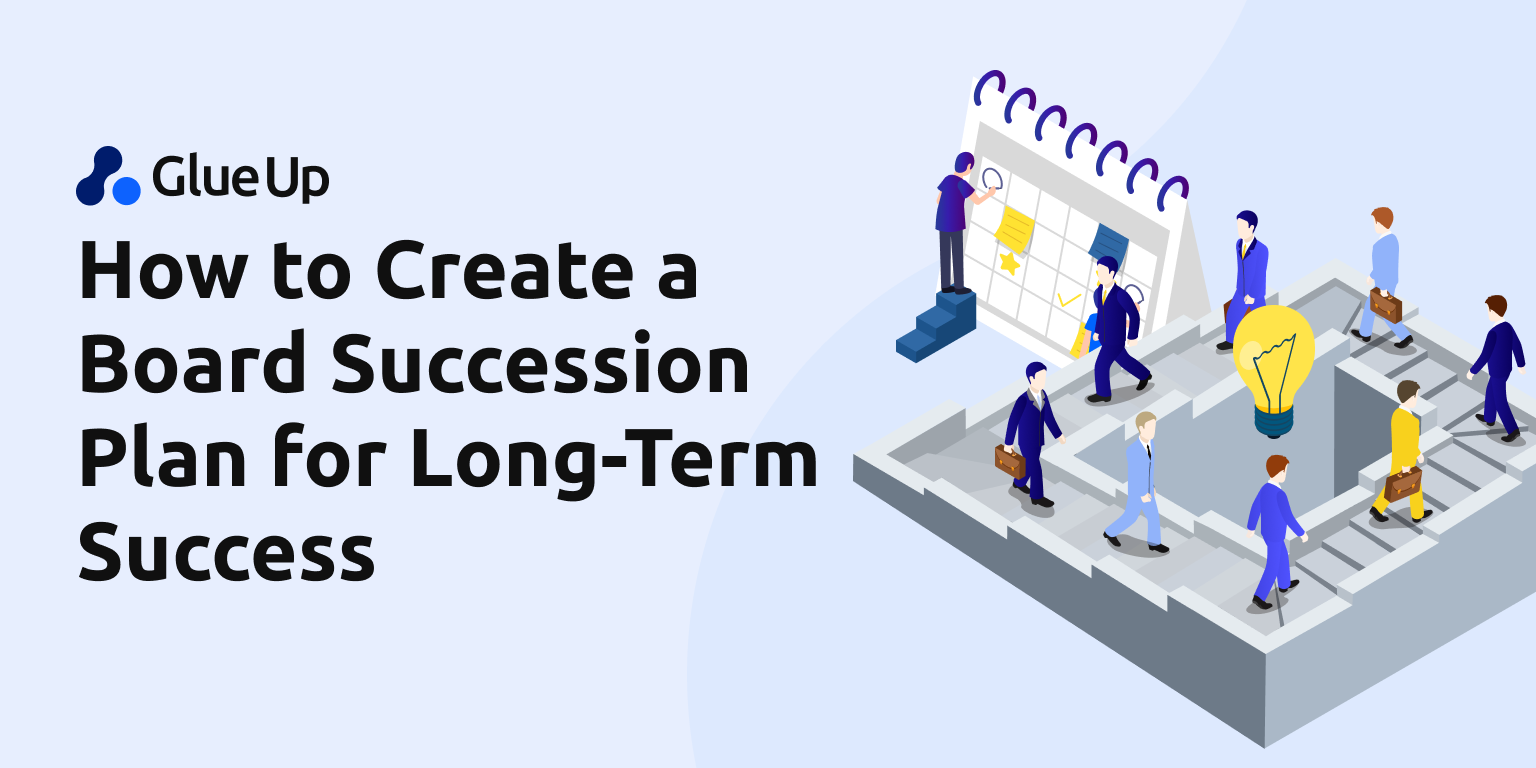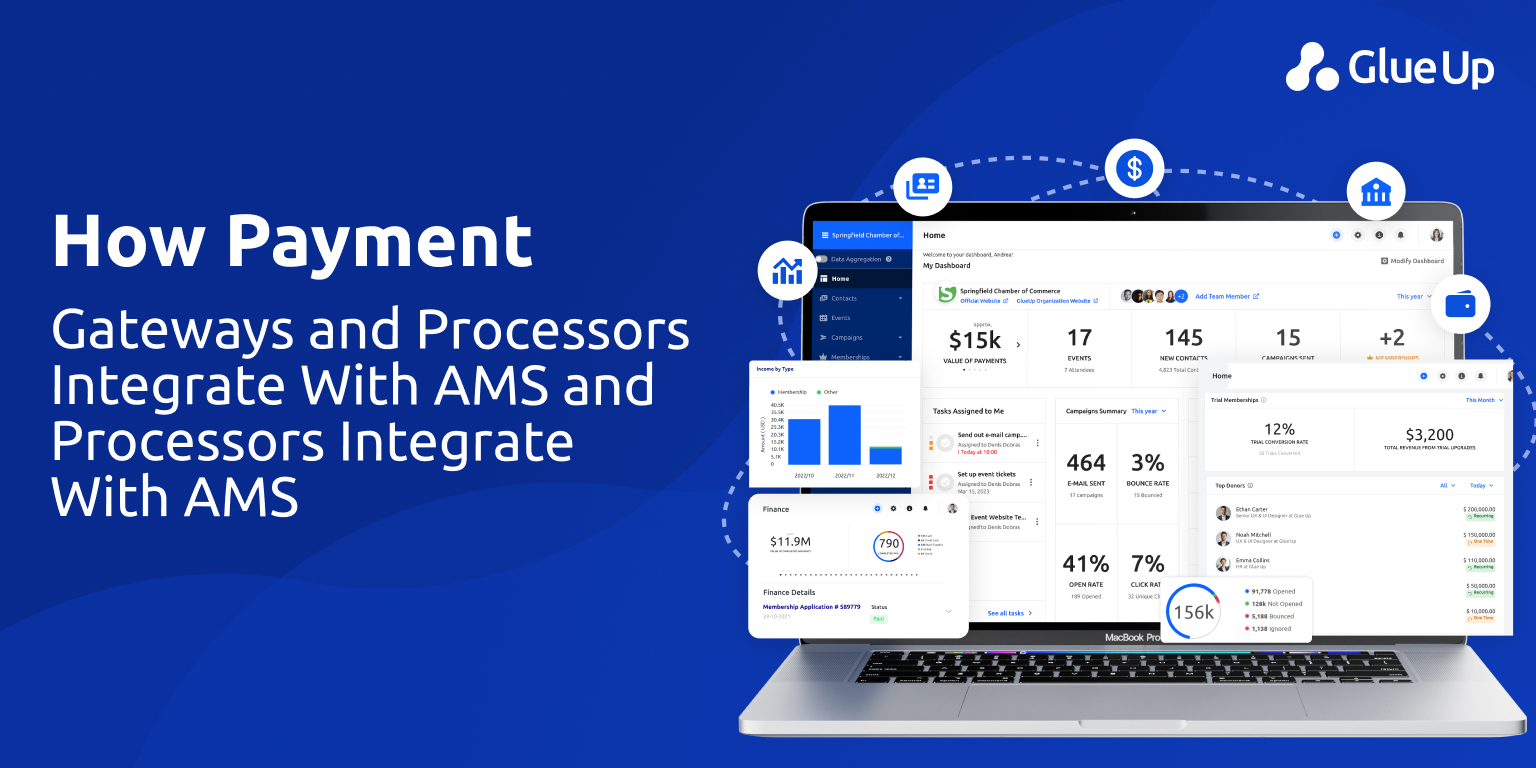
An entity's sustainability and growth heavily rely on effective governance. A well-crafted board succession plan is essential for guaranteeing a seamless transition of leadership within the board.
However, many associations lack such a strategy, leading to potential challenges, but not anymore, as this blog outlines the significance of board succession planning and provides actionable steps to develop an effective plan.
If you're seeking guidance on this crucial aspect, keep reading until the end.
Key Takeaways
- A board succession plan is crucial for ensuring a smooth leadership transition and maintaining organizational stability.
- Essential elements include identifying leadership roles, defining necessary skills, and developing a leadership pipeline through mentorship.
- Fostering openness and engaging external talent pools can address resistance to change and a lack of suitable candidates.
- Clear protocols, transition plans, and collaborative decision-making help maintain stability during leadership changes.
- Glue Up provides tools for leadership development, member management, and communication, supporting effective board succession strategies.
The Key Elements of a Strong Board Succession Plan

Several elements are essential for creating a robust board succession plan that supports organizational continuity and growth.
Each element plays a critical role in equipping the board to navigate leadership changes while maintaining strategic direction and operational effectiveness.
Some important components include:
Identifying Critical Leadership Roles
The first step is to identify key leadership positions that significantly impact the organization’s strategic direction and operations. Focus on preparing the right individuals to fill these roles, considering both current and future needs while mitigating risks associated with leadership transitions.
Defining Skills and Qualifications for Future Board Members
Once critical roles are identified, outline the necessary skills and qualifications for future board members. As organizational challenges evolve, board criteria may change, requiring a mix of technical expertise, industry knowledge, and essential soft skills like leadership and collaboration.
Creating a Leadership Pipeline
Develop a leadership pipeline by nurturing internal talent through training, mentoring, and increased responsibility. The process builds the skills of emerging leaders, strengthens loyalty, and ensures a ready supply of capable individuals familiar with the organization’s values and goals. Such preparation leads to smoother transitions and long-term success.
Step-by-step Process to Create a Board Succession Plan

Creating an effective board succession plan involves a systematic approach that confirms the organization is prepared for future leadership changes.
Here’s a step-by-step process to guide you through the development of a comprehensive plan.
Step 1: Assess Current Board Composition
Begin by analyzing the strengths, skills, and experience of existing board members. The assessment should include a review of each member's expertise, background, and contributions to the board's objectives.
Understanding the current composition allows for identifying gaps in skills or experience that may need attention from future board members. Laying this groundwork is essential for creating an effective succession plan.
Step 2: Forecast Future Needs
Consider the organization’s future needs based on its growth, challenges, and goals. It is crucial to evaluate strategic initiatives, market trends, and potential obstacles that could impact the board’s effectiveness.
Forecasting future needs enables organizations to align their succession planning efforts with the skills and qualifications necessary for board members in the coming years.
Step 3: Identify Potential Successors
Outline methods to identify potential leaders, both internal and external. Internal candidates might include employees with leadership potential or those already in the organization’s pipeline.
External candidates could be sourced through networking, industry connections, or recruitment agencies. Establishing criteria for evaluating these candidates based on the earlier assessments will ensure a robust pool of successors.
Step 4: Develop a Mentorship and Training Program
Implementing a mentorship and training program is helpful for preparing successors for board roles. Pair potential leaders with current board members or executives to provide them with guidance, insights, and real-world experience.
Additionally, you can offer tailored training sessions focusing on essential skills such as governance, financial literacy, and strategic planning. Such preparation promotes confidence and competence in future board members.
Step 5: Create a Timeline for Transitions
The final step is to establish a clear timeline for transitions to manage leadership changes smoothly. The timeline should outline key milestones for identifying successors, completing training programs, and implementing leadership changes.
Setting specific deadlines and benchmarks allows organizations to monitor progress and make necessary adjustments to stay on track. A structured approach minimizes disruptions and guarantees the board is well-prepared for upcoming changes.
The Benefits of a Board Succession Plan for LongTerm Success
Implementing a board succession plan offers numerous advantages that contribute to the long-term success of an organization.
Here are some key benefits:
Ensuring Leadership Stability
Succession planning plays a critical role in avoiding gaps in leadership and certifying stability during transitions. When a board member departs unexpectedly, a well-prepared succession plan enables the organization to quickly promote or appoint a qualified successor.
Continuity is vital for maintaining operational effectiveness and preserving institutional knowledge. A clear plan allows organizations to navigate transitions with confidence, minimize disruptions, and maintain stakeholder trust.
Aligning Leadership with Strategic Goals
Having board members who understand and can execute the organization's vision is essential for achieving strategic objectives. A succession plan guarantees that future leaders are aligned with the organization's mission and values.
Selecting successors committed to the strategic goals fosters a cohesive board that works collaboratively toward common objectives. Alignment enhances decision-making and maintains focus on long-term priorities, ultimately driving the organization’s success.
Reducing the Risk of Disruption
A well-defined succession plan mitigates risks associated with sudden leadership changes. When transitions occur without a plan, organizations may face uncertainty and disruptions that can impact performance and stakeholder confidence.
Proactively identifying and developing successors reduces the likelihood of such disruptions. A clear succession strategy provides a roadmap for navigating changes, ensuring that the board remains effective and responsive to challenges.
Managing these risks is crucial for maintaining stability and promoting resilience in the face of change.
Best Practices for Board Succession Planning
To maximize the effectiveness of a board succession plan, organizations should follow these best practices:
Regularly Review and Update the Plan
Keeping the succession plan dynamic is essential for adapting to evolving organizational needs.
Regular reviews, ideally annually, allow organizations to assess the current board composition, evaluate changes in strategic goals, and identify any new skills or experiences needed in future leaders.
Ongoing evaluation keeps the plan relevant and responsive to the organization’s shifting environment, helping to avoid potential gaps in leadership and preparing for future challenges.
Promote Diversity in Leadership
A diverse board brings a wealth of perspectives and experiences, driving innovation and enhancing decision-making. Promoting diversity in leadership enriches discussions and helps the organization connect more effectively with its stakeholders and communities.
Boards with diverse members are better equipped to identify new opportunities, address challenges from multiple angles, and reflect the demographics of the population they serve. Companies with diverse leadership see a 19% growth in revenues, highlighting the tangible benefits of promoting diversity within leadership teams.
Inclusivity cultivates a more comprehensive understanding of the organization’s environment, ultimately leading to better outcomes.
Open Communication with Stakeholders
Transparent communication with stakeholders about succession planning efforts is vital for building trust and confidence in the organization.
Keeping stakeholders informed about the process, criteria for selecting successors, and the overall goals of succession planning helps to alleviate concerns and demonstrates a commitment to stability and continuity. Open dialogue can also invite valuable feedback and insights, further enriching the planning process.
Engaging stakeholders in this way reinforces their investment in the organization and its future leadership.
Common Challenges in Board Succession Planning and How to Overcome Them

Board succession planning can encounter several challenges that may hinder its effectiveness. Here are some common obstacles and strategies for overcoming them:
Resistance to Change
One of the primary challenges in board succession planning is the reluctance of board members to embrace leadership transitions. Resistance often stems from a fear of losing influence, uncertainty about new leadership styles, or attachment to current members.
A major factor behind such resistance is a lack of trust in leadership, with 41% of change resistance attributed to this issue.
To address these concerns, cultivating a culture of openness and adaptability within the board is essential. Encouraging discussions about the importance of succession planning and its benefits can help alleviate resistance.
Offering training on change management and showcasing successful transitions in other organizations can further demonstrate the positive outcomes of a proactive approach.
Lack of Suitable Candidates
Another challenge is the absence of obvious successors, which can create uncertainty in leadership continuity. To develop and groom future leaders, organizations should implement mentorship and development programs that identify potential candidates early on.
Offering training, professional development opportunities, and increased responsibilities to emerging leaders within the organization strengthens their readiness. Encouraging cross-functional experiences broadens their skill sets and prepares them for future board roles.
Engaging with external networks provides access to diverse talent pools, ensuring the organization is not limited by its immediate circle.
Ensuring Continuity During Transitions
Maintaining consistency and focus when key members step down is crucial for organizational stability. To guarantee continuity, organizations should establish clear processes and protocols for transitions.
Creating transition plans that outline responsibilities and timelines, along with appointing interim leaders when necessary, helps maintain order. Regular communication with stakeholders during transitions reinforces confidence and transparency.
Encouraging collaborative decision-making ensures the board remains focused on strategic goals, minimizes disruptions, and keeps the organization operating effectively during periods of change.
Optimize Your Board Succession Strategy with Glue Up
Glue Up is one of the leading association management solutions and is recognized for being the first global AI-powered AMS. It offers a wide range of features tailored to meet the needs of associations, enhancing their operational efficiency and strategic planning. Some of these key features include:
Centralized Member Database
Easily manage and access member information, helping to identify potential successors within the organization.
Training and Development Tracking
Monitor the progress of potential leaders through training programs to ensure they are prepared for future board roles.
Communication Tools
Facilitate transparent discussions and collaboration among board members and stakeholders about succession planning.
Reporting and Analytics
Generate insights on board composition and performance trends to inform succession strategies.
Document Management
Organize and store essential documents related to board succession planning, making them easily accessible.
Event Management
Coordinate training sessions and mentorship programs seamlessly to develop future leaders.
With these robust features, Glue Up empowers organizations to implement effective board succession strategies, ensuring continuity and alignment with their long-term goals. Ready to transform your board succession planning? Book a demo today.



